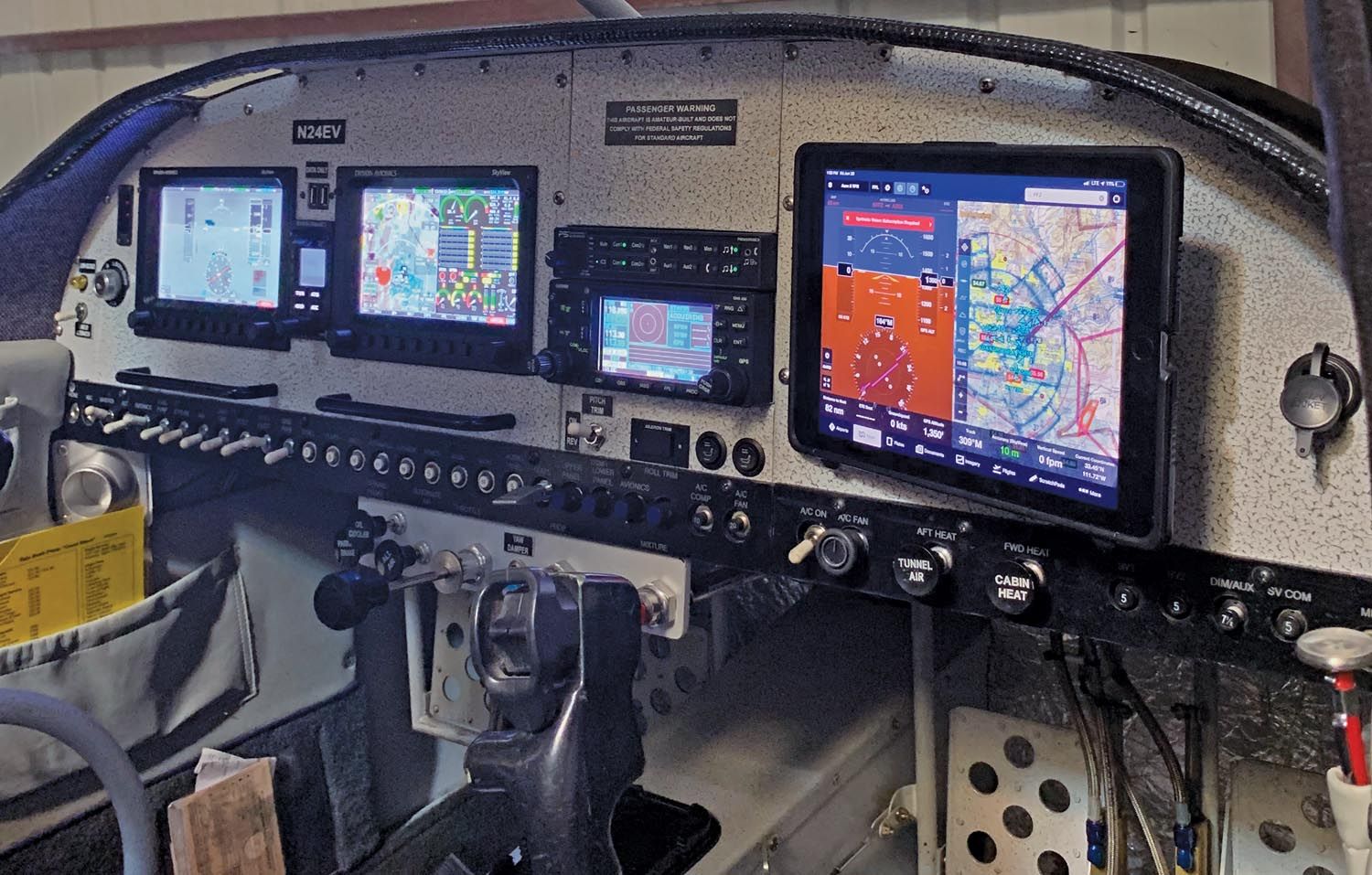 The term “Wi-Fi enabled” involving aircraft conjures up images of fat cats shorting Boeing stock at FL450 in their Gulfstreams or frustrated airline pax trying to stream Stranger Things at dial-up speeds. For better or worse, that type of Wi-Fi access hasn’t reached down to the average E/A-B aircraft yet. However, there is new Wi-Fi based technology that melds commercial avionics with commonplace computer tablet technology and purpose-built applications that create exciting “best of both worlds” opportunities and usefulness. This technology is not only available today, but is also rather easy and inexpensive to adopt. But first, some background.
The term “Wi-Fi enabled” involving aircraft conjures up images of fat cats shorting Boeing stock at FL450 in their Gulfstreams or frustrated airline pax trying to stream Stranger Things at dial-up speeds. For better or worse, that type of Wi-Fi access hasn’t reached down to the average E/A-B aircraft yet. However, there is new Wi-Fi based technology that melds commercial avionics with commonplace computer tablet technology and purpose-built applications that create exciting “best of both worlds” opportunities and usefulness. This technology is not only available today, but is also rather easy and inexpensive to adopt. But first, some background.
One of the first things any new builder realizes right from the get-go is that selecting one’s airframe of choice merely initiates a dizzying array of further choices that will have to be made. Freedom and flexibility are wonderful, but they can also be overwhelming at times. When I first started my RV-10 project in 2007, it was during an important transition in the E/A-B world with respect to avionics. Van’s actually offered a precut panel for the -10 for conventional round mechanical gauges, but out of a hundred or so into which I have peered inside, I can only recall one RV-10 with a steam-gauge panel, and as gorgeous as it was, it wasn’t for me. An aerobatic/sport plane looks natural with an old-school panel, but a modern cross-country cruiser, not so much.

Blue Mountain and Chelton EFISes were common in build projects of the era, but issues were starting to arise. One vendor was showing dazzling glass displays at airshows that they bragged would “give the competition heart attacks.” Yes, the mockups were pretty amazing, and the projected prices insanely low, but that whole project apparently turned out to be more dreamware than viable hardware.
My choice at crunch time came down to first generations of Dynon, Advanced, (now under the Dynon roof), GRT, and MGL. Certified market titan Garmin had yet to go big in experimental. In hindsight I could have been very well served by any of the top choices, but a Dynon rep at a Copperstate Fly-In sold me on a new, then yet unnamed, second-generation product line now known as SkyView. Now with over 600 hours flown on the SkyView system, I have been quite happy.
As someone who flies Boeings for a living, I wanted an airline type layout at my seat. From left to right, there’s a primary flight display (PFD), navigation display (ND), and systems/engine display (MFD). I also wanted the redundancy of two screens. For me that meant two side-by-side 7-inch SkyViews at the captain’s seat, with the inboard one usually split between MAP and MFD.
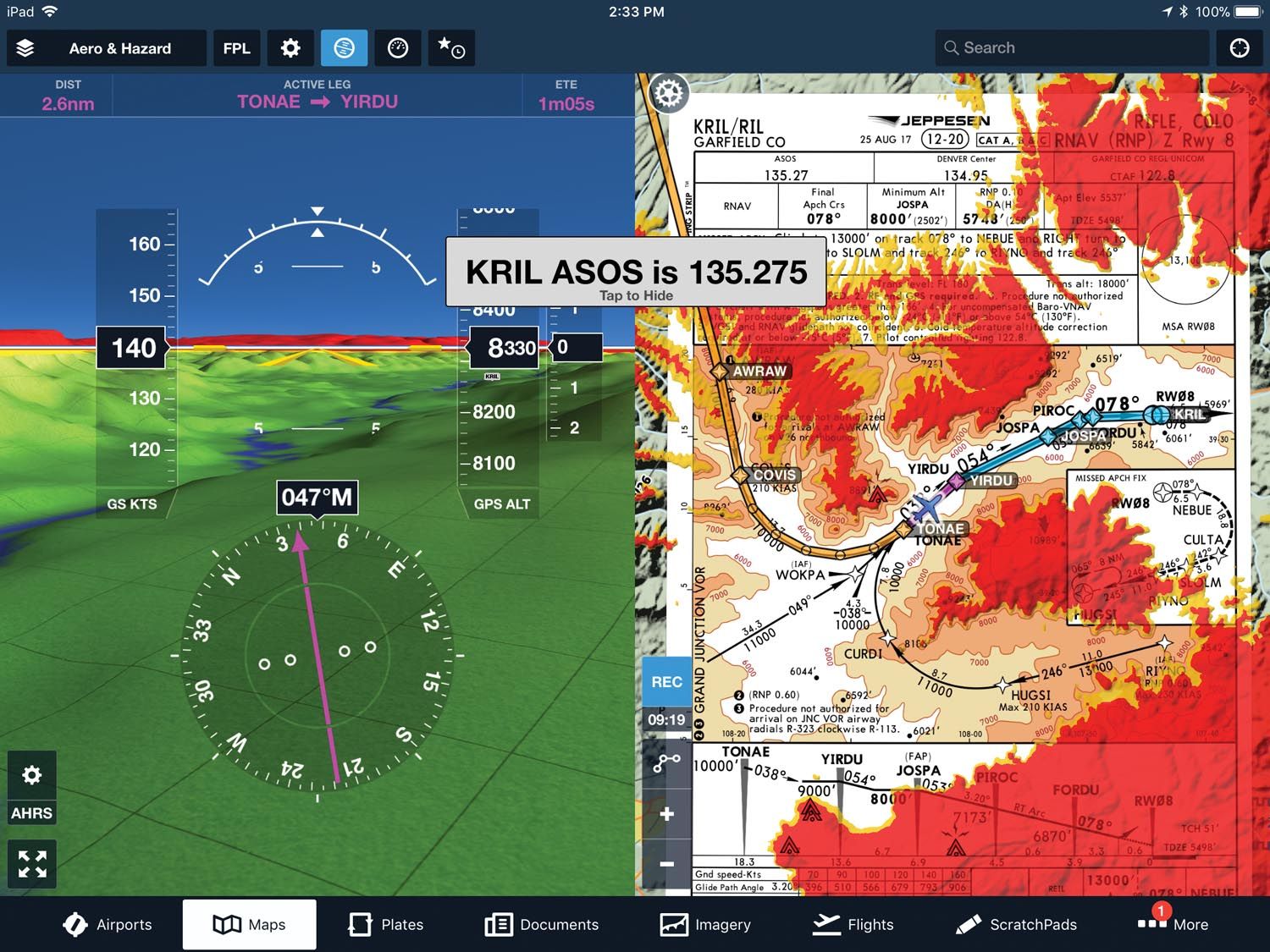
I am going to interject right here that my design preference flies a bit in the face of what has been the hot trend for several years of one massive beautiful screen at each driver’s seat and perhaps an MFD in the middle, most likely inspired by the Garmin G1000 systems that arguably broke the “glass ceiling” as it were in certified general aviation. There is a reason those setups are popular, and far be it from me to critique that type of design. I most certainly am not. Nevertheless, flexibility and personal preference are hallmarks and advantages of our avocation. To each his own. Regardless of preference, as their cheeky advertising confirms, master avionics facilitator Stein Air still isn’t happy until we’re all broke.
What About Backup?
Having made the decision to go with dual smaller SkyView screens, the next decision was what to do with the right seat and/or backup. I was never looking to bore through hardball IFR as I was never going to have enough turbofans installed for that, but I did want a properly IFR equipped and capable airplane with a reasonable and economically justifiable level of redundancy. I remember chatting with a builder at an airshow years ago who had proudly proclaimed that every vital system in his project (except propulsion) had three layers of redundancy. A few minutes later, he remarked on how he was still acquiring the requisite hours for his private pilot practical exam. Yes, in my opinion, there is such a thing as overkill when it comes to sport plane system design.
The pundits of the early glass days were still promoting a separate and independent backup system. Many early adopters went with bare-bones steam gauges as a backup, like what Cirrus and other early glass factory rigs were putting out at the time. That was and continues to be perfectly fine, but personally, I wanted nothing to do with vacuum pumps and their associated mechanical displays.

My initial decision was to go with a first-generation Dynon system, with its internal gyro data and separate magnetometer as the right-seat backup. Hoping to possibly find an inexpensive unit on the used market, I even set up the cabling and power for just such a system behind the right panel. I wanted to be able to plug and play when fortune and opportunity presented itself. On the day of my first flight, however, my right-side panel was bare—but man how I loved the primary panel!
As time and experience with the airplane and the SkyView system wore on, and as I stared at the vacant right panel, I started to change my thinking. I abandoned the idea of the bare-bones gen-one six-pack type system. Instead, I considered adding a second ADAHRS to the primary system. With redundancy in power supplies, including backup screen batteries, screens, and gyros, I decided it made more sense to add an additional SkyView screen on the right side and tie it into the system. This allowed for all the associated display options, especially with ADS-B data. Problem solved (or so I thought). Now I just needed to find an attractive price on a third screen and write more magazine articles to pay for it.
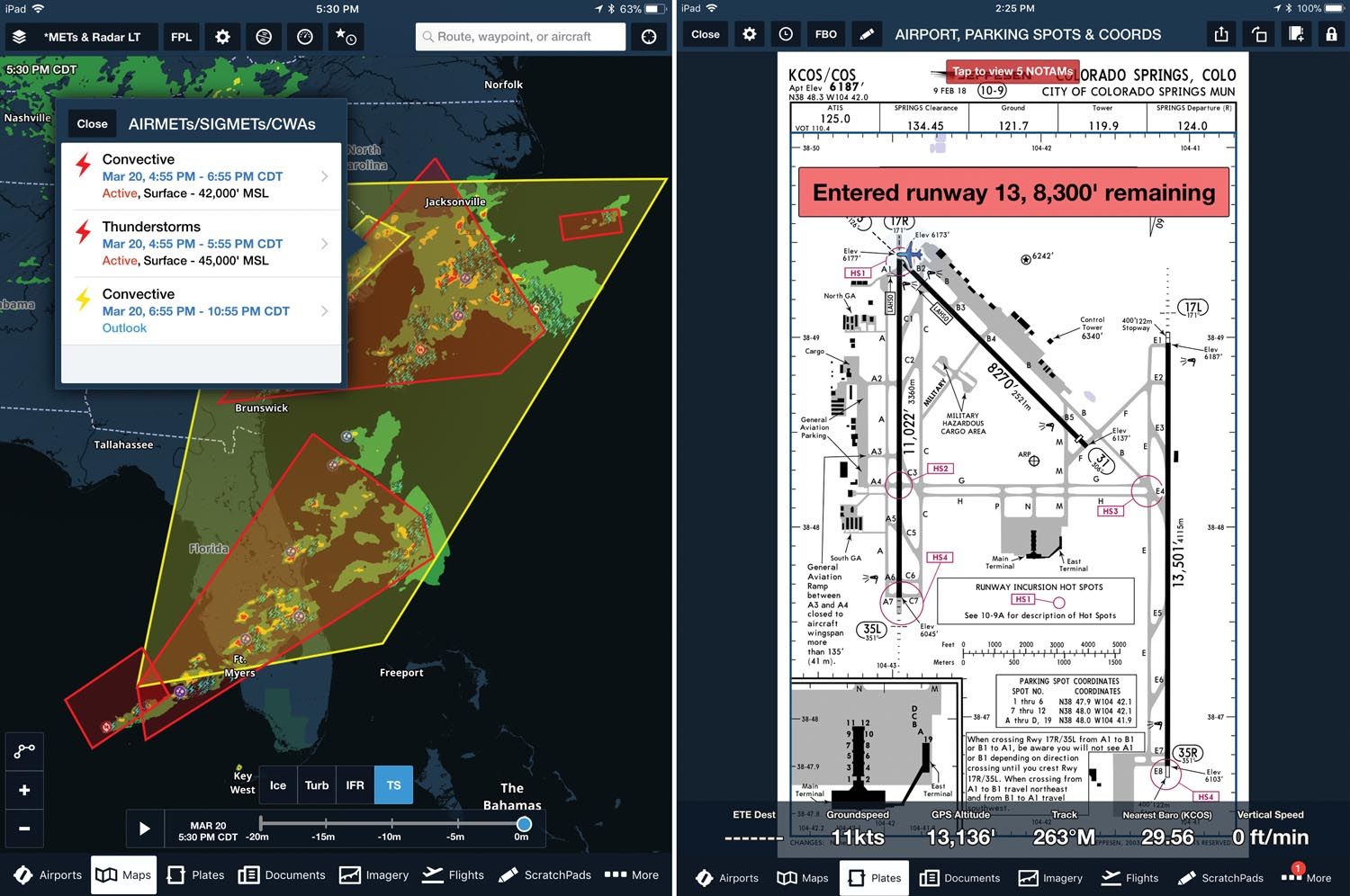
Electronic Flight Bags
At about this same time, there was an evolution going on in the airline world as well. Those beautifully crafted Scott leather “brain” bags, stuffed heavily with bulging Jepp binders and a library of manuals and such that we painfully lugged around for decades, gave way to electronically updated electronic flight bags (EFBs), and there was much rejoicing in airlinedom (along with lots of chiropractors losing business). Everything from en-route charts and approach plates to aircraft and operational manuals were loaded into an easily searchable device that updated with a screen tap and snapped onto mounts in the cockpit. No more yellow envelope plague when one returned from vacation.
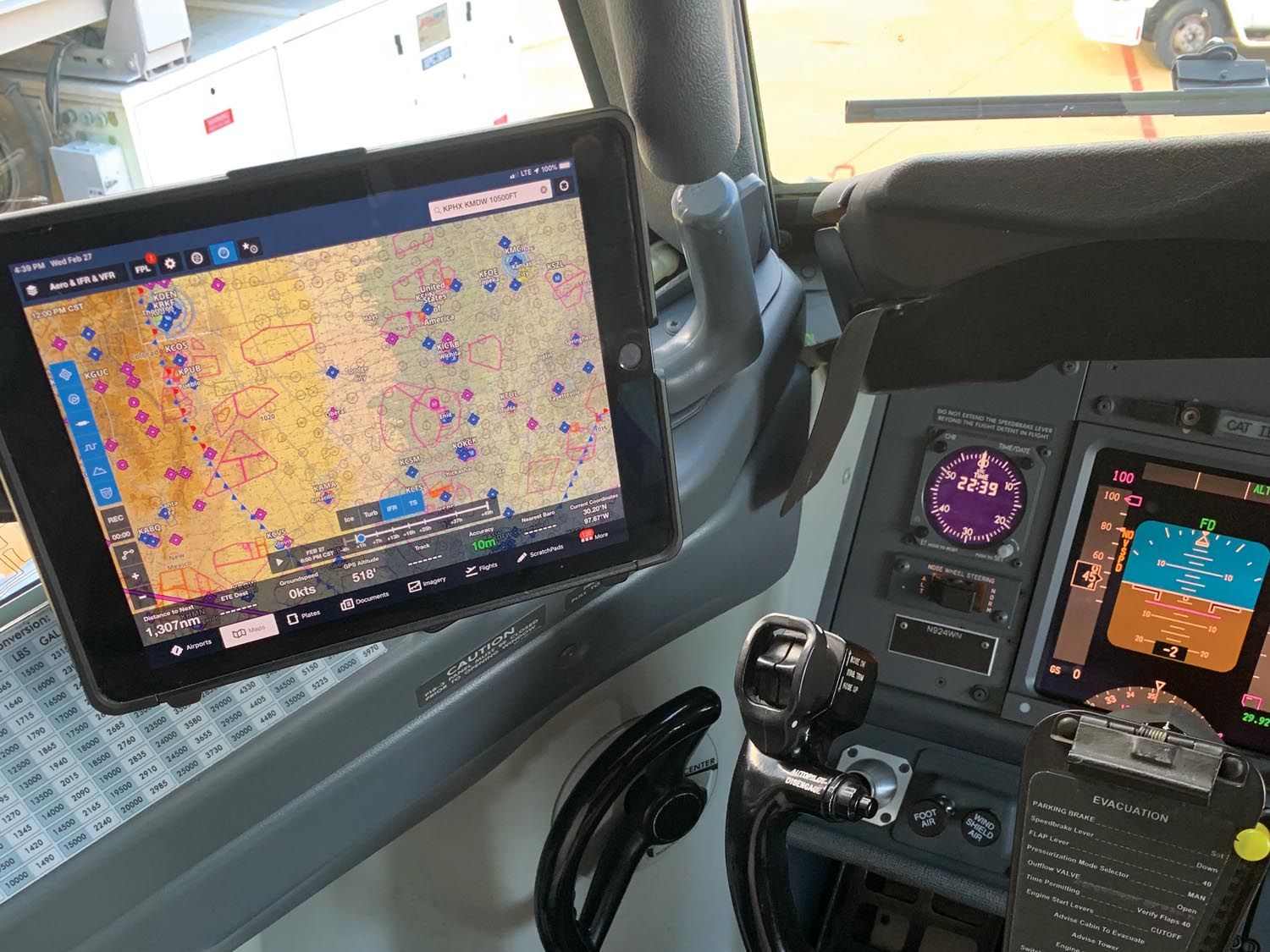
In the case of my airline, our device is an everyday iPad enclosed in a durable and attractive case that is made by a company called Pivot. The recess on the back of the case snaps into an array of base options that all use a universal mount. The original mounts were suction cup based, but they are now being replaced as we speak with permanently affixed mounts with charging ports. Pivot makes a wide variety of accessories for their mounts and cases.
One of the later features of our EFBs came into being when the airline signed a contract with ForeFlight (now part of Boeing/Jeppesen) for a tailored version of its software to serve as a backup source of navigation and approach plate data. Concurrent with this new development was a discount available to line pilots to purchase the normal full-featured ForeFlight product at a discount. (Pilots invented copper wire by stretching pennies, and we tend to be easy suckers for discounts).
The final icing on the cake in this tale (and the reason for all the background information) was when Dynon introduced a Wi-Fi adapter to connect their SkyView units to several popular flight management software systems that run on common tablet computers. Suddenly I had an epiphany with regards to my long-vacant right-panel real estate; I knew exactly what I wanted to do!
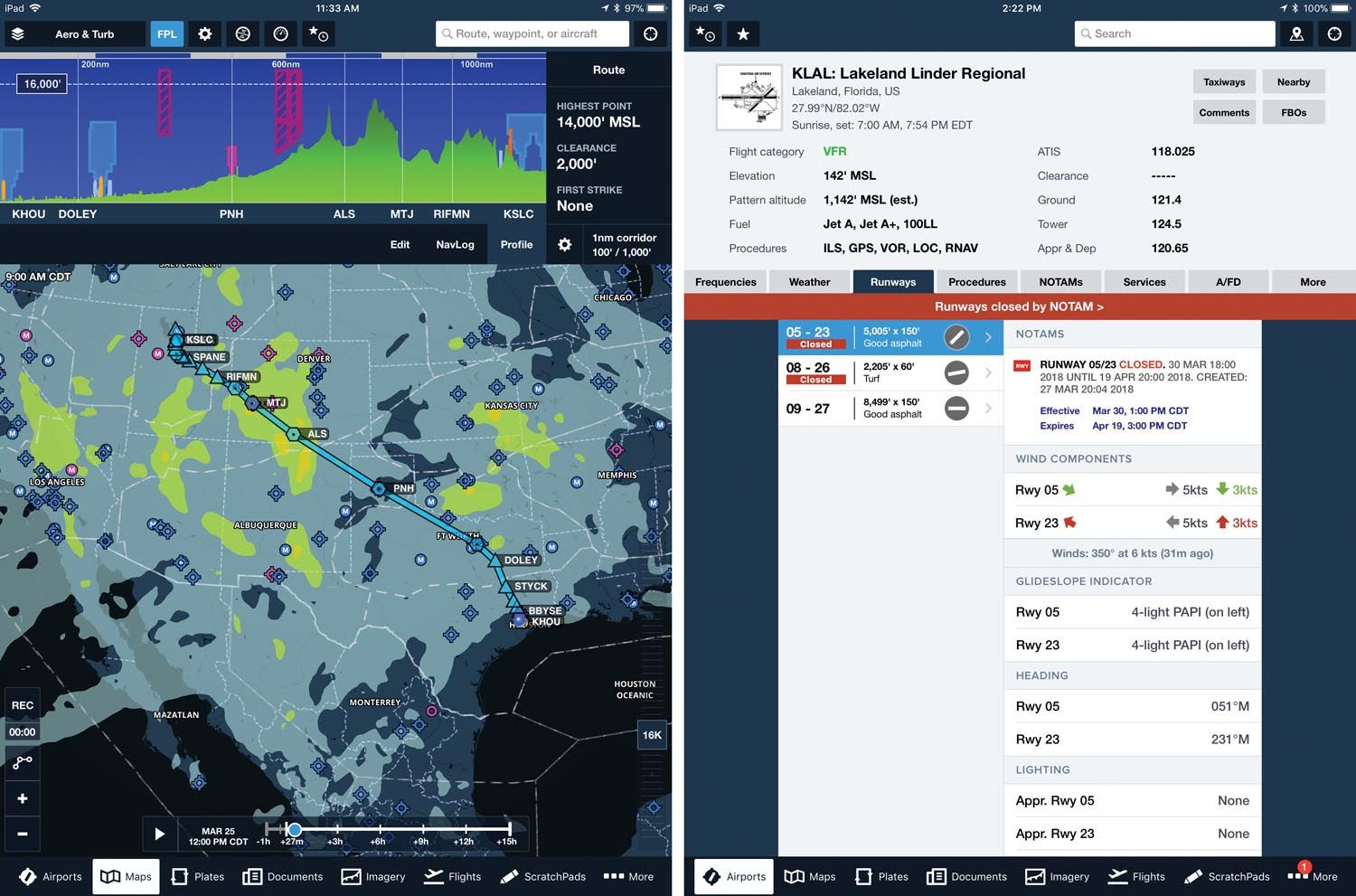
Putting It All Together
Having decided to connect an iPad to the SkyView via Wi-Fi, I ordered a simple, inexpensive mount from Pivot that I affixed to the panel. The mount is perfectly centered on the panel like it had always been meant to be, and it swivels a bit in all directions, allowing for the tablet to clear the glareshield. I had originally mounted a power port years ago that was now in the absolutely perfect position. Even a blind squirrel finds a nut now and then.
I then ordered the Dynon Wi-Fi adapters. They list at $35 apiece, and each SkyView screen in the network must have one. The adapters themselves connect via USB to each screen. (Easy peasy, except like all USBs that for some strange reason seem to take three tries to insert, even when the math says there should never be more than two attempts necessary.)
The Dynon system recognized the adapters, and setup could not have been simpler. The setup menu takes you through each step. If you know your N-number, you have all the information you need.
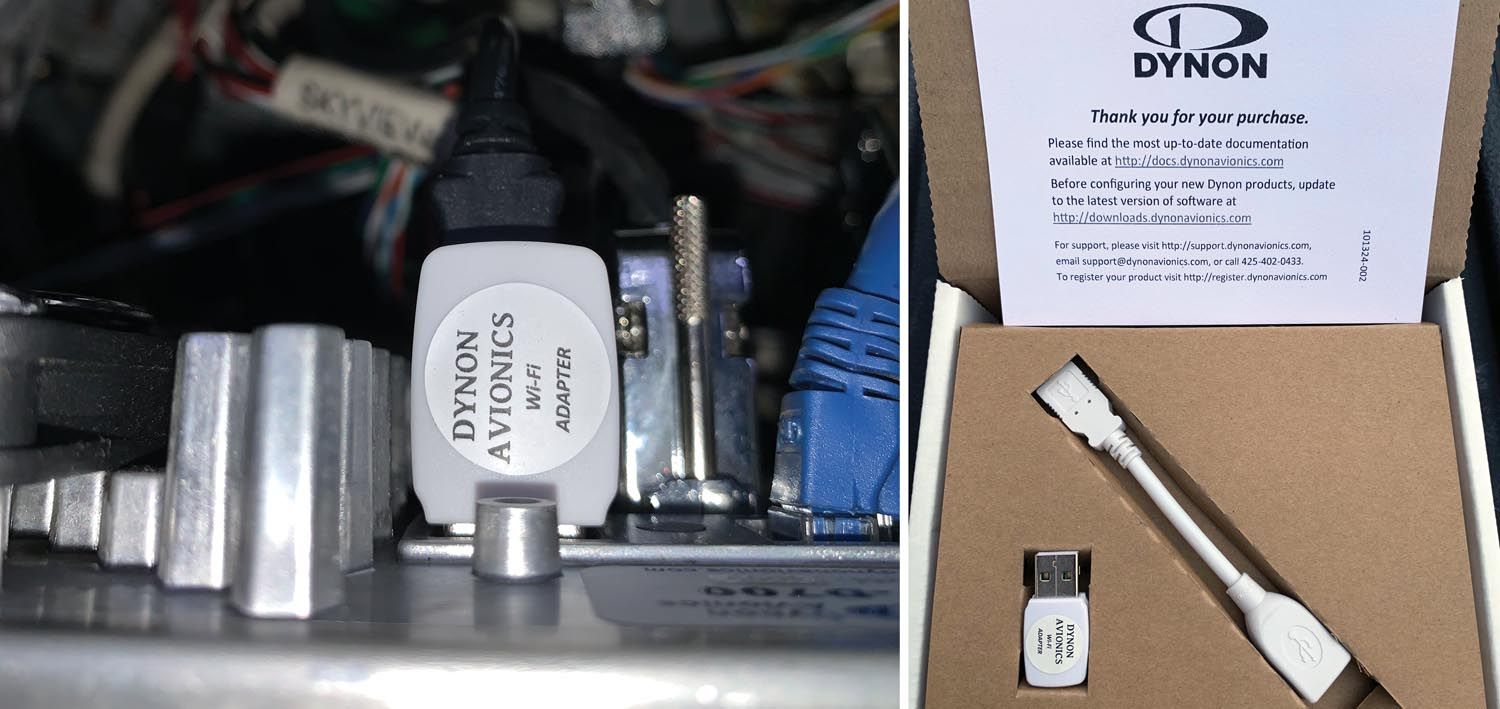
Turning now to the EFB, the Wi-Fi mating process was equally simple, requiring once again nothing more than knowing your N-number as that is the name of the Wi-Fi network you connect to, and to which you simply connect to like any other. Showing the forward type planning that Dynon (and others) are thinking, there is even a selectable option to use both Wi-Fi and cellular data concurrently, which is handy. Overall I found the setup process was easier than adding a new cellphone to the family car system.
Big Rewards
So what exactly does one gain for such a setup? The first thing is a crisp, high-definition display with its own internal backup battery for a fraction of the cost of an additional EFIS box. Okay, I am admittedly prejudiced, but I happen to think that it looks quite complimentary and attractive on the panel.
Features depend upon the ever-expanding capabilities of the hardware and the software chosen. In my case I’m using an iPad with GPS and Bluetooth, with ForeFlight and Dynon’s Wi-Fi network capability. Other hardware and software solutions are already on the market.
My package gives me a third independent GPS source and display screen with full aeronautical data, plus terrain, obstacles, and full “magenta line” navigation capability. Through the Wi-Fi network and the Dynon ADS-B, the screen also displays traffic and weather and most likely whatever else comes down that data pike in the future.
When my wife first started flying with me in previous aircraft, one of her anxieties was concern over other traffic, which seemed dizzying and alarming to her. Now that we have ADS-B traffic, she actually enjoys finding traffic on the screen and then searching it out and finding it in the sky, at which point I receive a corporal announcement of “tallyho” by way of a sharp elbow to the ribs and a finger pointing to where the bogies are. It has made her much more comfortable flying, which in itself is well worth the cost of admission (and the bruised ribs).
An additional feature of the Wi-Fi network being connected to the EFIS is that the EFB can display critical flight instruments driven by the host ADAHRS. This gives you a genuine gyroscopic artificial horizon (pitch and roll) mated with GPS speed, altitude, and track. I would never want to get to the point that this was my last lifeline, but the package is quite capable of getting you safely back on the ground if all else fails. ForeFlight even offers synthetic vision capability on the app for an additional subscription cost.
There are myriad other features that are constantly being upgraded. A couple of note are aural alerts for runway proximity, traffic, terrain, TFRs, destination weather, final approach runway, and low altitude. There’s even an alert for weight and balance when your CG is out of limits. Alerts are sent via Bluetooth to an enabled headset.
One very nice feature that can actually pay for the whole bundle over time is the fuel price feature. Update the software prior to takeoff, and it will show you current fuel prices along your route or anywhere on the map. Variances of as much as a dollar or more are common, even in close proximity, and it could possibly take only a single provident fill-up to cover a year’s subscription cost of the software.
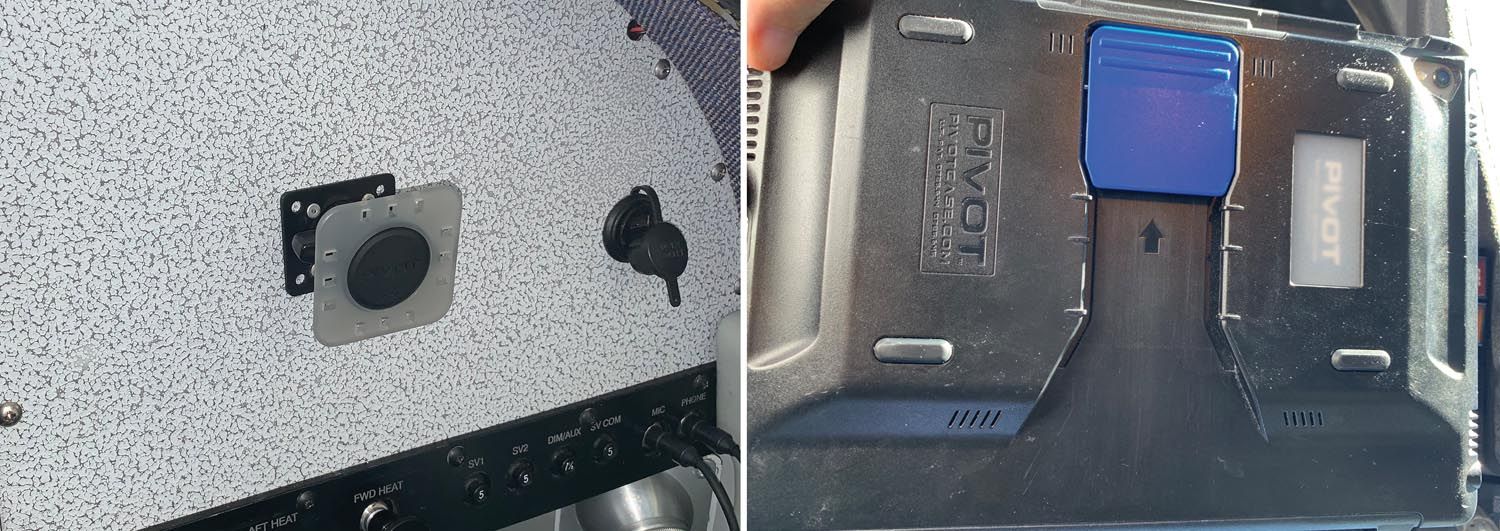
Another useful feature over a hardwired box is that the EFB remains snap-on, snap-off portable and upgradable. Hold it on your lap when it’s convenient, snap it back on the panel when it’s not. You can build and file your flight plan from home and Wi-Fi transfer it to the EFIS when connected to ship’s Wi-Fi. There are far too many convenience features available to highlight every single one. The sky is literally the limit.
I already had the EFB courtesy of my company, so the simple upgrade for me was a no-brainer. But even starting from scratch, one could easily put a complete package together for less than $1200 installed, which is a bargain. Aeronautical utility aside, that also leaves you with a fully functioning personal electronic device, camera, entertainment device, and so on, which most of us own anyway. Feature wise, in my opinion, it’s one of the biggest bangs for the buck available today.
Each reader’s needs, wants, and desires may be justifiably different than mine, but I am absolutely tickled at how this new Wi-Fi enabled setup has elegantly added to the capabilities of my RV-10’s cockpit, which in its own right is already more feature rich than today’s brand-new airliners. For more information visit www.dynonavionics.com and www.foreflight.com.











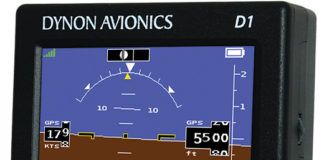
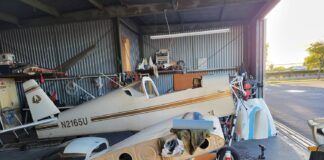
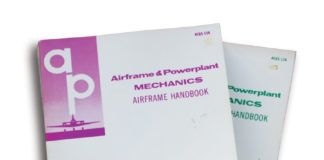
Great article…thanks!
Myron; I’m intrigued by the control stick grip in your beautiful -10, it looks rather familiar. Looks like you’ve rigged up “half a Boeing” control wheel on the right side, in your first picture. Very similar to (but mirror image) that on your 737 in the EFB picture. Care to fill us in on the details?
Hi, D Seward,
Happy New Year. Yes you have sharp eyes. Both of my stick grips came from their respective uprights from a Boeing 737 yoke that I stumbled upon on Ebay. (It had a yellow tag on it from Delta Airlines). All of the switches work normally except the intercom which is now voice activated. One of the hardest things was procuring a second trim switch for the other side, but once I did, it fit nicely and functions perfectly.
I enjoy it as a reminder of the day job and the attention that it draws from sharp eyed folks like yourself.
Sorry it took so long to respond. Long embarrassing story. Cheers.